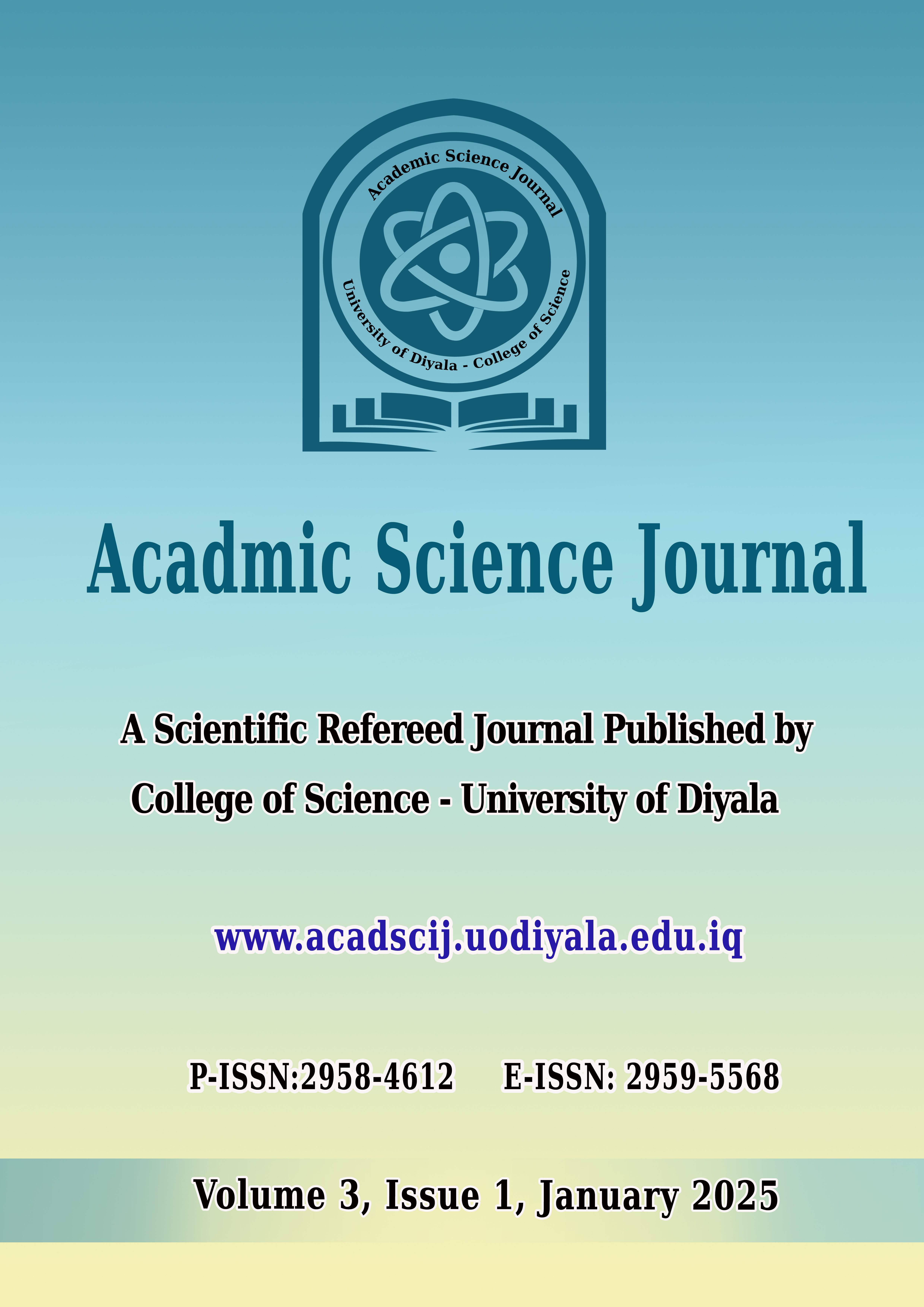Relation between Renal Function and Insulin Resistance of Type 2 Diabetic Iraqi Patients
DOI:
https://doi.org/10.24237/ASJ.03.01.798BAbstract
Type 2 diabetes mellitus (T2DM) is a condition where the body's ability to regulate and utilize
glucose as fuel is compromised. As a result of this chronic ailment, excess sugar circulates in
the bloodstream. Thus, it can be described as a cluster of metabolic disorders that manifest
through factors like insulin resistance and give rise to various complications. These conditions
impact several physiological organs, leading to reduced efficiency in their functioning. The
objective of this study was to assess the level of insulin in patients with Type 2 diabetes mellitus
(T2DM) and to interpret the relationship between insulin resistance (HOMA-IR) and renal
function. The methods employed in this investigation were designed to achieve these specific
aims, seventy patients and twenty controls were involved for this study. The patients of T2DM
was divided into three group according to them eGFR, 20 stage I patients (G1), 25 stage II
diabetic patients (G2) and 25 stage III diabetic patients (G3). Insulin, fasting plasma glucose
(FBG), HbA1c, and renal function were measured in all subject. The study's findings indicated
that patients in Group 3 (G3) with elevated glomerular filtration rate (GFR) exhibited
significantly higher insulin levels (14.48 μIU/ml) and HOMA-IR values (8.66) compared to
other patients. Moreover, diabetic patients had significantly higher serum insulin levels than
those in the healthy control group (P<0.001). The diabetic group also demonstrated a marked
degree of insulin resistance compared to the healthy control group. Additionally, a negative
correlation was observed between HOMA-IR, eGFR, and Duration in the diabetic patients.
Conclusion: higher insulin levels and insulin resistance appear to contribute to the development
of chronic kidney disease (CKD).
Downloads
References
M. H. Forouzanfar, L. Alexander, H. R. Anderson, V. F. Bachman, S. Biryukov, M.
Brauer, R. Burnett, D. Casey, M. M. Coates, Global, regional, and national
comparative risk assessment of 79 behavioural, environmental and occupational, and
metabolic risks or clusters of risks in 188 countries, 1990–2013: a systematic analysis for
the Global Burden of Disease Study 2013, Lancet, 388(10010),2287–323(2015),
DOI(https://doi.org/10.1016/S0140-6736(16)31679-8)
H. DALYs GBD, Collaborators, CJ. Murray, RM .Barber, KJ. Foreman, A. Abbasoglu
Ozgoren, F. Abd-Allah, SF. Abera, V. Aboyans, JP. Abraham, Global, regional, and
national disability-adjusted life years (DALYs) for 306 diseases and injuries and healthy
life expectancy (HALE) for 188 countries, 1990–2013: quantifying the epidemiological
transition. Lancet,386(10009),2145–91(2015), DOI(https://doi.org/10.1016/S0140-
(15)61340-X)
EE. Simon, LL. Hamm, A basic approach to CKD, Kidney Int., 77(7),567–569 (2010),
DOI(https://doi.org/10.1038/ki.2009.516)
D. Teta, Insulin resistance as a therapeutic target for chronic kidney disease, J Ren Nutr.
(2), 2269(2015), DOI(https://doi.org/10.1053/j.jrn.2014.10.019)
G. Garibotto, A. Sofia, R. Russo, E. Paoletti, A. Bonanni, EL. Parodi, F. Viazzi, D.
Verzola, Insulin sensitivity of muscle protein metabolism is altered in patients with
chronic kidney disease and metabolic acidosis, Kidney Int., 88(6),1419–26(2015),
DOI(https://doi.org/10.1038/ki.2015.247)
SS. Thomas, L. Zhang, WE. Mitch, Molecular mechanisms of insulin resistance in
chronic kidney disease, Kidney Int., 88(6), 1233–1239(2015),
DOI(https://doi.org/10.1038/ki.2015.305)
G. Souto, C. Donapetry, J. Calvino, MM. Adeva, Metabolic acidosis-induced insulin
resistance and cardiovascular risk, Metab Syndr Relat Disord, 9(4), 247–53(2011),
DOI(https://doi.org/10.1089/met.2010.0108)
N. Goraya, J. Simoni, CH. Jo, DE. Wesson, Treatment of metabolic acidosis in patients
with stage3 chronic kidney disease with fruits and vegetables or oral bicarbonate reduces
urine angiotensinogen and preserves glomerular filtration rate, Kidney Int., 86(5),1031–
(2014), DOI(https://doi.org/10.1038/ki.2014.83)
I. Loniewski, DE. Wesson, Bicarbonate therapy for prevention of chronic kidney disease
progression. Kidney Int., 85(3), 529–535(2014), DOI(https://doi.org/10.1038/ki.2013.401)
N. Goraya, J. Simoni, CH. Jo, DE. Wesson, A comparison of treating metabolic acidosis
in CKD stage 4 hypertensive kidney disease with fruits and vegetables or sodium
bicarbonate, Clin J Am Soc Nephrol., 8(3), 371–381(2013),
DOI(https://doi.org/10.2215/cjn.02430312)
E. Cersosimo, P. Garlick, J. Ferretti, Am J Physiol, Insulin regulation of renal glucose
metabolism in humans, 276, E78–E84(1999),
DOI(https://doi.org/10.1152/ajpendo.1999.276.1.E78)
C. Meyer, M. Stumvoll, V. Nadkarni, J. Dostou, A. Mitrakou, J. Gerich, Abnormal renal
and hepatic glucose metabolism in type 2 diabetes mellitus, J Clin Invest 102, 619–
(1998), DOI(https://doi.org/10.1172/JCI2415)
DR. Matthews, JP. Hosker, AS. Rudenski, BA. Naylor, DF. Treacher, RC. Turner,
Homeostasis model assessment: insulin resistance and β-cell function from fasting plasma
glucose and insulin concentrations in man. Diabetologia, 1,28(7),412-419(1985),
DOI(https://doi.org/10.1007/BF00280883)
PY. Chang, LN. Chien, YF. Lin, MS. Wu, WT. Chiu, HY. Chiou, Risk factors of gender
for renal progression in patients with early chronic kidney disease, Medicine, 95(30),
e4203(2016), DOI(https://doi.org/10.1097/md.0000000000004203)
S. Agrawal, JJ. Zaritsky, A. Fornoni, WE. Smoyer, Dyslipidaemia in nephrotic syndrome:
mechanisms and treatment, Nature Reviews Nephrology, 14(1),57(2018),
DOI(https://doi.org/10.1038/nrneph.2017.155)
J. Reiser, Circulating permeability factor suPAR: from concept to discovery to clinic,
Transactions of the American Clinical and Climatological Association, 124,133-138(2013)
Downloads
Published
Issue
Section
License
Copyright (c) 2025 CC BY 4.0

This work is licensed under a Creative Commons Attribution 4.0 International License.





